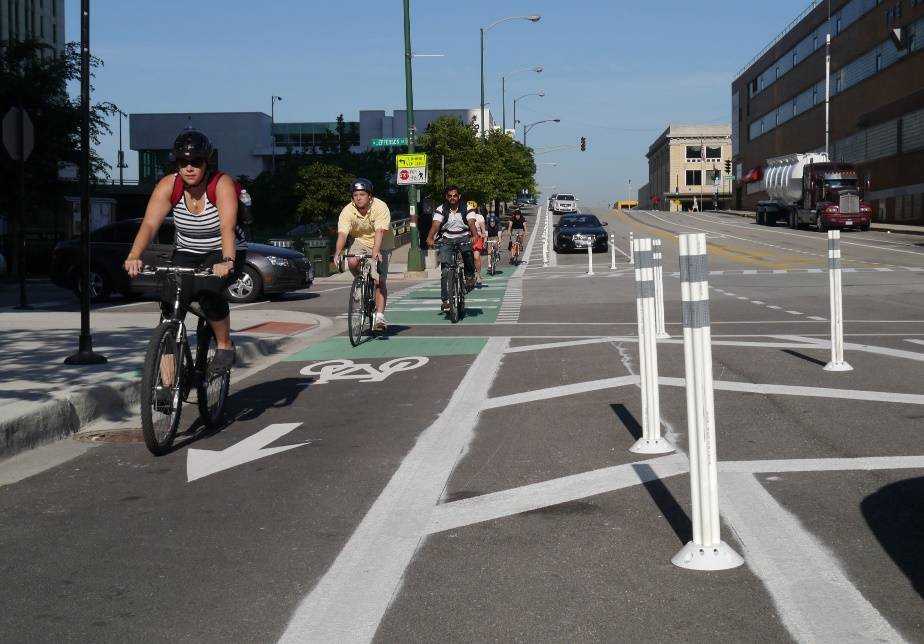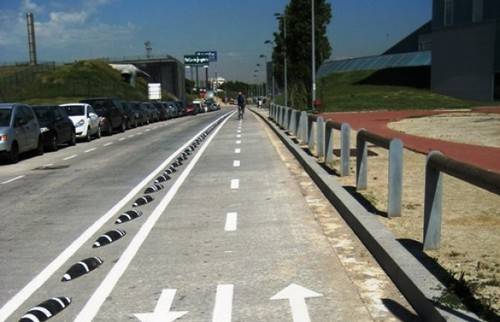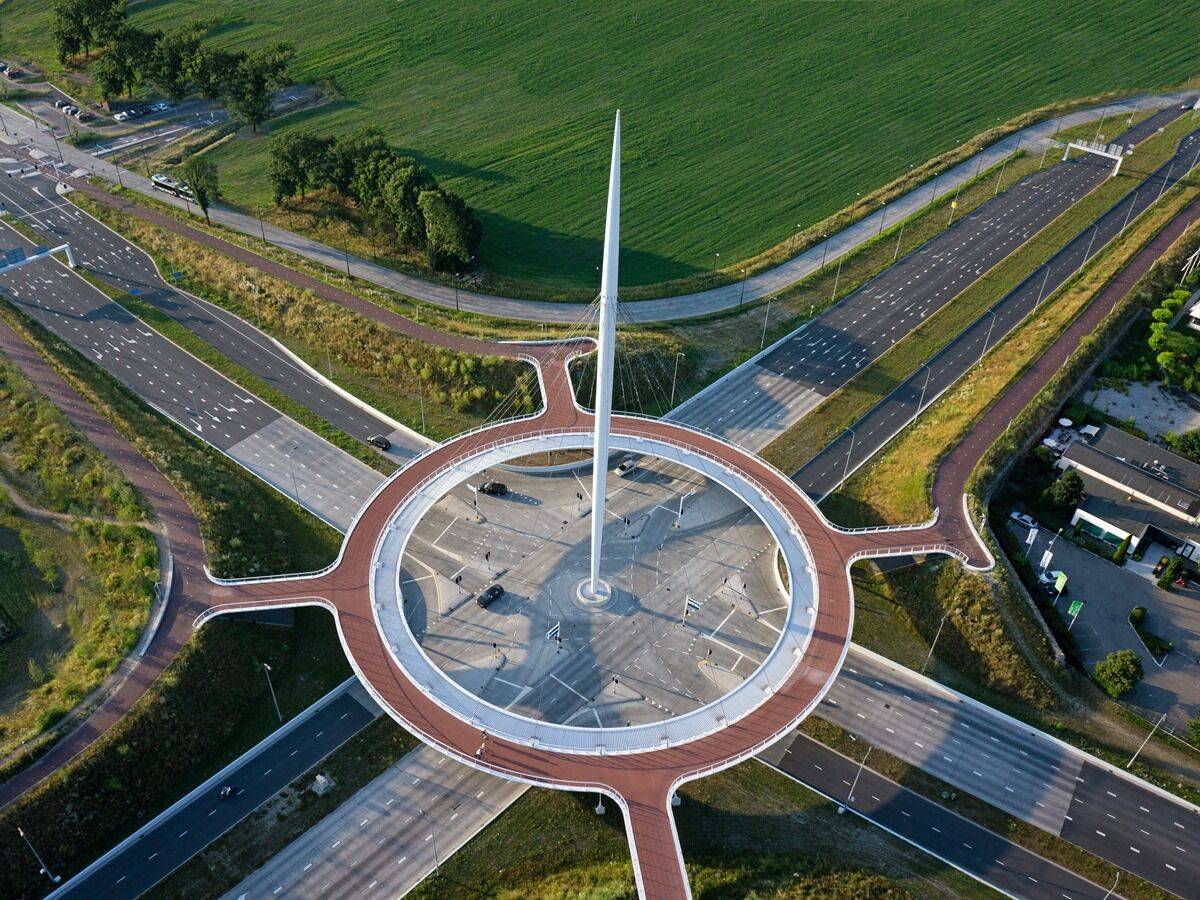BIKE LANE FOR FRIENDLY CITY
How to make your city bike friendly
As cycling becomes a more popular form of transportation, cities all over the world are taking steps to increase safety and access to cycling. In this blog post, we'll look at some of the measures cities are taking to make their streets more cycling friendly. We'll also discuss how you can help your own city become more cycling friendly. Whether you're an avid cyclist or just looking for ways to make your city more accessible and safer for cyclists, this post will provide you with some helpful ideas.
The Need for MOre bike- friendly cities
The number of people who choose to cycle as their primary mode of transportation has steadily increased over the years. Cycling is a convenient and cost-effective way to get around. It also helps reduce pollution, traffic congestion, and improve overall public health. As such, cities around the world are making it a priority to create more bike-friendly infrastructure.
The need for bike-friendly cities goes beyond creating safe and efficient paths for cyclists. Bicycle infrastructure provides access to areas of the city that may not be easily accessible by other means. This allows cyclists to visit areas of the city that may not be accessible by car or public transportation. By increasing access to these areas, bikeways can help bring economic development, improved public health, and increased safety for cyclists.
Creating bicycle infrastructure also helps to create a sense of community within cities. Bike lanes and paths create opportunities for cyclists to meet and interact with one another. Bikeways provide a space for cyclists to ride together and develop relationships with their fellow riders, as well as build stronger ties with the local community.
With all these benefits, it's no wonder why cities are working hard to make their streets more bike-friendly. Bike infrastructure encourages cycling, which in turn can bring positive economic, social, and environmental changes to communities around the world.
THESE ARE THE TOP WORLD'S BEST CITY FOR CYCLING, See the website Here
The benefits of bikeways
Biking is becoming increasingly popular as a form of transportation, and cities are looking for ways to make their roads safer and more accessible for cyclists. Bikeways are one of the main tools cities are using to make cycling easier and safer.
Bikeways provide dedicated lanes for cyclists that are typically separated from motor vehicle traffic by physical barriers such as curbs, medians, or parked cars. This separation ensures cyclists have their own space on the road and that they can travel safely and without fear of being hit by cars. Bikeways also typically have lower speed limits than regular roads, further increasing the safety of cyclists.
Additionally, bikeways can provide an alternate route for those who choose not to use public transportation or drive a car. By providing a designated bikeway, cities are giving cyclists an easy way to get around town and encouraging more people to take up biking as a form of transportation.
In addition to providing a safe route for cyclists, bikeways can also help reduce air pollution and traffic congestion in cities. By providing an alternate route for cyclists, bikeways can help to ease the burden on roads and reduce the number of vehicles on the road. This can lead to less air pollution and traffic jams, making cities more livable.
Finally, bikeways can provide economic benefits to cities. Studies have shown that bikeways can increase property values, attract businesses, and bring in tourists who want to explore by bike. This additional revenue can help cities improve their infrastructure and provide even more benefits for cyclists.
Overall, bikeways can provide many benefits to cities, including increased safety for cyclists, alternate routes for those who choose not to use public transportation or drive a car, reduced air pollution and traffic congestion, and economic benefits. By investing in bikeways, cities can make their roads safer and more accessible for cyclists.
Lanes for Bike Infrastructure
Creating dedicated bike lanes is one of the most effective ways to make cycling safe and accessible in cities. Bike lanes are striped areas on the road that are specifically designed for bicyclists. They are usually clearly marked with paint, signs, or other physical features like planters or bollards.
These designated bike lanes allow cyclists to travel more safely and comfortably since they have a dedicated area on the road. Not only do bike lanes provide a safer environment for cyclists, but they also make it easier for drivers to identify bicyclists, making it easier for everyone to share the road.
When designing bike lanes, it's important to consider the needs of different types of cyclists, such as those who ride for recreation, transportation, or competitively. To ensure that all cyclists are well-served, it is important to consider factors such as width, visibility, signage, and other design elements.
The type of bike lane you choose will depend on the amount of space available and the needs of cyclists in your city. For instance, some cities may prefer wider bike lanes with separate paths for bicyclists going in opposite directions. Other cities might opt for painted bike lanes with additional signage or markings to indicate that the area is dedicated to cyclists.It's also important to consider how intersections will be handled in bike lane designs.
Some cities have implemented bike boxes at intersections, which provide an area where cyclists can wait in front of cars and have a better view of approaching traffic. This helps to ensure that cyclists have a safe place to wait at busy intersections. In addition to traditional bike lanes, cities are also exploring innovative solutions like cycle tracks and protected bike lanes. Cycle tracks are physically separated from the rest of the street and provide a dedicated space for cyclists. Protected bike lanes use physical barriers such as planters and curbs to separate cyclists from motor vehicles. These options can make cycling even safer for everyone involved and allow for more people to take advantage of biking in urban areas.
Intersection bike lane management
Making cycling safe in a city doesn’t just mean building more bike lanes and routes. It also means taking care of the intersections, which are often the most dangerous places for cyclists. One way to make intersections safer is to establish intersection bike lanes. This type of lane gives cyclists dedicated lanes when entering and exiting intersections, providing a barrier between vehicles and bikes.
Intersection bike lanes can be set up in different ways. In many cities, cyclists will have an entire lane dedicated to them at the intersection. This provides a clear separation between motorized traffic and cyclists and makes it easier for cyclists to safely navigate the intersection. In other cities, cyclists may be directed to enter the intersection using a bike box or other lane marking. This allows cyclists to enter the intersection first, giving them the right of way and allowing them to exit safely.
It is also important to consider how the intersection bike lane interacts with other traffic signals. For example, some cities may use traffic signals that are activated only when a cyclist is present at an intersection. This allows cyclists to be given a head start on their ride and gives them more time to safely pass through the intersection. Other cities may use traffic lights with separate signals for cyclists, giving them their own dedicated green light.



By implementing intersection bike lanes, cities can make cycling safer and more accessible. Dedicated lanes give cyclists their own space on the road and help ensure they have a safe and easy journey through intersections. Traffic signals that recognize and give priority to cyclists can also help make cycling more convenient, providing cyclists with a head start on their ride. With careful planning and thoughtful implementation, cities can make intersections safer for cyclists, improving the overall experience of cycling in their city.
Innovative bike lane infrastructure
There are a variety of innovative bike lane infrastructure solutions that cities can implement to increase safety and access for cyclists. One of the most popular is protected bike lanes, which are physically separated from motor vehicle traffic with barriers or buffers. These lanes help cyclists to feel more secure and can reduce the number of collisions between cars and bikes.
Another option is cycle tracks, which are designed to provide a dedicated path for cyclists that is away from both motor vehicles and pedestrians.
Other cities have implemented bike boxes at intersections, which create a designated space for cyclists waiting to make a left turn.
This makes it easier for cyclists to be seen by drivers when crossing an intersection, thus reducing the risk of collisions. Some cities have also added bike signals at intersections, which provide cyclists with their own green light signal so they don't have to worry about getting stuck behind a long line of cars.
Finally, cities are beginning to experiment with bike share programs, which allow cyclists to rent a bike from a station and then return it at another location. This provides easy access to cycling for commuters and tourists alike, helping them to explore the city without having to own a bike.
In summary, there are many innovative bike lane infrastructure solutions that cities can implement to increase safety and access for cyclists. By implementing these solutions, cities can create a safer environment for cyclists and encourage more people to cycle.



Bike lane tunnel
The main advantage of a bike lane tunnel is that it provides cyclists with a safe, traffic-free route to travel. This means cyclists can travel at their own pace without having to worry about cars or other obstacles. Additionally, the tunnel allows cyclists to stay out of the way of regular traffic and reduces the likelihood of collisions.
Another benefit of a bike lane tunnel is that it increases cyclist visibility. In some cases, bike lanes can be hard for motorists to spot, especially at night. With a bike lane tunnel, cyclists are better visible and drivers are less likely to collide with them.
Building a bike lane tunnel does come with some costs, however. The cost of construction, maintenance and repairs will vary depending on the length of the tunnel, its width and the materials used. Additionally, these types of projects take a long time to complete and require a lot of planning and resources.
Overall, bike lane tunnels are an innovative solution to the problem of bicycle safety and access in cities. While they may come with some costs, they offer great benefits such as increased safety, visibility and convenience for cyclists. Additionally, they can help to reduce traffic congestion and make cycling more accessible to those living in densely populated areas.

Hovenring bike lane
Hovenring is an example of innovative bike infrastructure design that takes bike safety to the next level. Located in the city of Eindhoven, Netherlands, the Hovenring is a suspended bicycle bridge over a busy intersection. This bridge features a 70-meter diameter elevated roundabout and a 24-meter tall pillar that connects cyclists to a cycle path on the other side of the intersection.
The bridge has been designed to be both aesthetically pleasing and practical. The roundabout is illuminated by LED lights, while the bright orange steel ring draws attention to the bridge. It has also been designed to improve bike traffic flow, with cyclists able to cross the intersection without stopping or slowing down.
The project was designed to make bike travel safer, particularly for those crossing the intersection. There are now no longer any sharp turns or the risk of being struck by a vehicle. In addition, the elevation of the bridge makes it easier for cyclists to navigate their way across the intersection.
Overall, the Hovenring bike lane is a great example of how cities can increase safety and access to cycling. With thoughtful planning and innovative design, cities can create more bike-friendly infrastructure that improves safety for cyclists while also enhancing the aesthetics of the city.
Cost to build bicycle infrastructure
The cost of building bicycle infrastructure can vary greatly depending on the scope of the project. On average, it is estimated that a mile of bike lanes or paths costs between $50,000 and $250,000. This price can increase dramatically if the project includes building sidewalks, widening roads, or installing traffic signals. Furthermore, if the city requires special construction equipment and materials, such as asphalt or concrete, costs can easily reach upwards of $500,000.
When constructing a bikeway, cities must consider many factors in order to ensure its success and safety. These include cost-efficiency, terrain changes, parking needs, visual impact, and the existing street pattern. When analyzing the cost-effectiveness of bike infrastructure, cities should also consider potential future ridership and how it might increase over time. If a bike lane becomes more popular, it could result in fewer car trips and reduced traffic congestion in the area.
In addition to financial considerations, cities should also think about how bike infrastructure can contribute to a vibrant public space and create a safe and inviting environment for cyclists. For example, attractive bike racks or bike parking structures can encourage cycling and make it easier for people to access and store their bicycles. Other amenities like public art, benches, or planters can add further appeal to the area.
To successfully build a bikeway that meets the needs of its users, cities must dedicate time and resources to researching the different options available to them. Investing in bicycle infrastructure can be an expensive endeavor, but with careful planning and long-term strategies in place, cities can create a cycling network that is both efficient and enjoyable
Paul Bollard : Dec 07 for Bollard Canada

